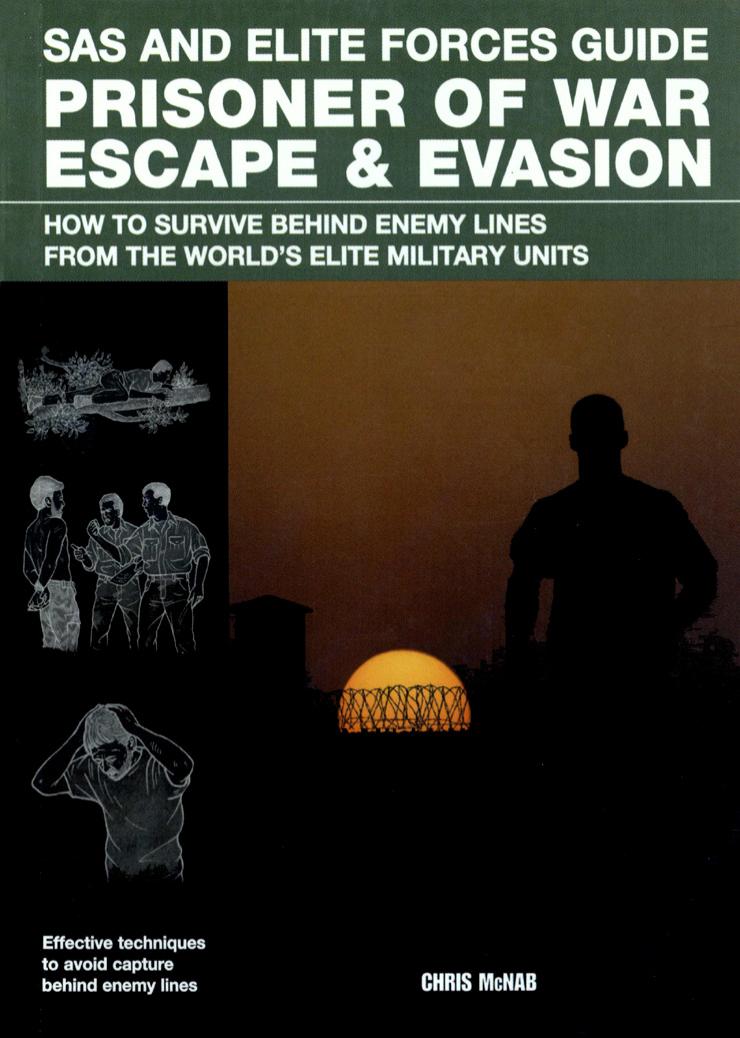SAS and Elite Forces Guide Prisoner of War Escape & Evasion by Christopher McNab

Author:Christopher McNab
Language: eng
Format: epub, pdf
ISBN: 9781461748649
Publisher: Lyons Press
Before making any decisions in the wild, it is important to think intelligently about all your actions and their potential consequences. Carry out an immediate risk assessment, and identify what are the greatest threats to your well-being. For a pure survival point of view, you have a short list of priorities. Simplified to their extreme, these consist of the following: 1) Find water; 2) Find food; 3) Make shelter. The order of these priorities will vary according to your personal circumstances, but no element can be neglected without good reason. Here we will look at each in turn.
Water
Obtaining clean drinking water is paramount in any survival situation. If you have just escaped from a POW camp, chances are that you wonât be carrying bulky water supplies, and therefore you have aproblem. On standard operations, a soldierâs water consumption needs vary from about 2 litres (4 pints) per day in cold climates through to 12 litres (25 pints) in extreme desert environments. If the fluid intake dips below the levels required to replace natural fluid loss (via sweating, urination, defecation, breathing, etc), then dehydration sets in. The consequences of dehydration range from mild mood changes through to death â without any water whatsoever, a person will be lucky to survive 3-7 days. One general Important point to note is that you shouldnât eat if you donât have anything to drink, as the processes of digestion consume much of your bodyâs water, particularty when assimilating fatty foods.
Geography and climate will generally dictate the availability of water. If you find yourself in a cold or temperate wilderness, there is likely to be plenty of accessible water in streams, rivers, puddles, snow (which should be melted before consumption), ponds, irrigation trenches and so on, although the open access to water doesnât avoid the need to purify it before drinking. When it rains, collect as much fresh water as you cart in whatever containers are available â you can create âguttersâ into the containers by using thick leaves or pieces of waterproof fabric.
Tip: Water Containers
If you manage to obtain containers in which to carry your water supplies, note the following official US Army advice about storing water in hot climates:
Maintaining safe, clean water supplies is critical. The best containers for small quantities of water (5 gallons [22.7 litres]) are plastic water cans or coolers. Water in plastic cans will be good for up to 72 hours; storage in metal containers is safe only for 24 hours ⦠If the air temperature exceeds 100 degrees Fahrenheit /37°C/, fne wafer temperature must be monitored. When the temperature exceeds 92 degrees Fahrenheit [33°C]t the water should be changed, as bacteria will multiply. If the water is not changed the water can become a source of sickness, such as diarrhea.
â Field Manual 90-3, Desert Operations; US Army Survival Manual
Download
SAS and Elite Forces Guide Prisoner of War Escape & Evasion by Christopher McNab.pdf
This site does not store any files on its server. We only index and link to content provided by other sites. Please contact the content providers to delete copyright contents if any and email us, we'll remove relevant links or contents immediately.
In a Sunburned Country by Bill Bryson(3438)
Annapurna by Maurice Herzog(3390)
How to Read Nature by Tristan Gooley(3205)
Dangerous Girls by Haas Abigail(2914)
SAS Survival Handbook by John 'Lofty' Wiseman(2625)
The Lost Art of Reading Nature's Signs by Tristan Gooley(2577)
In the Woods by Tana French(2480)
The Stranger in the Woods by Michael Finkel(2359)
Food and Water in an Emergency by Food & Water In An Emergency(2296)
Guns, Germs and Steel by Diamond Jared(2227)
Everest the Cruel Way by Joe Tasker(2203)
Wild: From Lost to Found on the Pacific Crest Trail by Cheryl Strayed(2168)
Backpacker the Complete Guide to Backpacking by Backpacker Magazine(2143)
Trail Magic by Trevelyan Quest Edwards & Hazel Edwards(2099)
Ultimate Navigation Manual by Lyle Brotherton(2073)
Sea Survival Handbook by Keith Colwell(2070)
Welcome to the Goddamn Ice Cube by Blair Braverman(1924)
Birds of the Pacific Northwest by Shewey John; Blount Tim;(1895)
The Last Flight by Julie Clark(1869)
